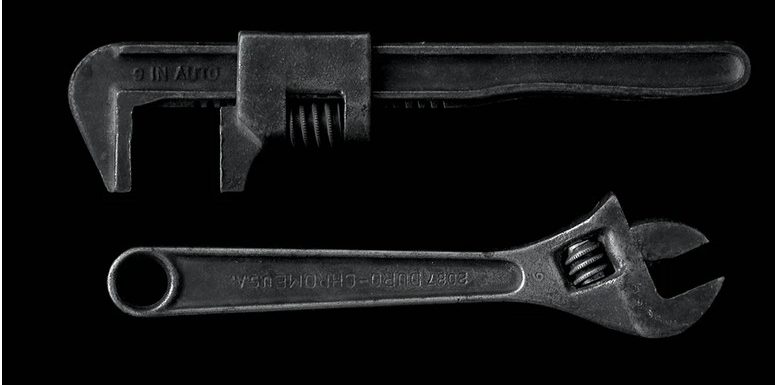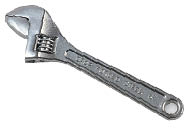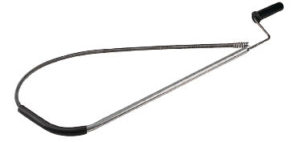
In this article we are going to talk about household plumbing tools. Though it’s necessary in many instances to hire a professional plumber, most household plumbing problems are actually easy to fix yourself. The tools you need to perform basic plumbing repairs fall into four categories: wrenches and pliers, screwdrivers, clog-clearing tools, and sealants and glues.
Table of Contents
Wrenches and Pliers
- Adjustable wrench: An adjustable wrench has one fixed and one adjustable jaw. When you turn the screw embedded in the side of the wrench, the adjustable jaw slides open or closed. Because its jaws aren’t serrated, an adjustable wrench is good for tightening and loosening nuts that connect piping.

- Locking-jaw wrench: Better known by its brand name, Vise-Grips®, a locking-jaw wrench has a knob on the end of one of its handles. This knob controls the opening of the wrench’s serrated jaws. The jaws remain closed, or locked, around a part until you pull a release lever, making the locking-jaw wrench an ideal “third hand.”

- Seat wrench: A seat wrench is designed to remove and install the seats inside a compression faucet (see How to Fix Leaking Faucets). The tips of seat wrenches vary to fit different seats.

- Spud wrench: This type of wrench handles a variety of large nuts, such as the slip nuts found on metal sink traps. Use the spud wrench when your adjustable wrench isn’t big enough for the job.

- Needle-nose pliers: Use these pliers to disassemble faucets and tackle other kinds of plumbing issues that require you to grab and hold small parts.

Screwdrivers
At minimum, you should have two different-sized Phillips-head and two different-sized slotted, or flathead, screwdrivers. A multitip screwdriver includes all the tips you need, though a set of four different screwdrivers works just as well.

Clog-Clearing Tools
- Closet auger: A closet auger is designed to clear toilet clogs. Rather than force a clog down the toilet into the waste line (as plungers do), closet augers retrieve objects that have gotten stuck in a toilet’s trap (see Plumbing Basics).

- Hand auger: When a plunger is unable to clear a clog in the waste line, a hand auger can prove to be useful. Inside this device, a wire called a snake is coiled within a round case. To use a hand auger, lead the snake down the drain until it hits the clog, then lock it in place and turn the knob behind the case. The snake then digs into the clog, either clearing the clogged material or allowing you to pull it out yourself.

- Plungers: It’s helpful to have two types of plungers on hand to clear clogs. Use either a force cup plunger or closet bowl force cup plunger to clear a toilet and a sink plunger to clear flat-bottomed sinks.

Sealants and Glues
- Electrical or duct tape: Use this sturdy tape to make temporary fixes in pipes that have sprung pinhole leaks.

- Epoxy putty: This two-part glue is made of a resin and hardener that, when mixed together, solidify to form a strong bond. Use epoxy putty to plug leaks in pipes.

- Teflon® tape: Because of its thick membrane, this tape creates an excellent watertight seal when wrapped around pipe threads. Teflon tape comes in small rolls that usually cost less than $2 each.
How to Use Teflon Tape

When using Teflon tape to create a watertight seal, pay attention to:
- Direction: Always wrap the tape around pipe threads in a clockwise direction. This ensures that when the pipes are threaded together, the tape tightens rather than unravels.
- Amount: You’ll need about 4–5 turns around the pipe threads to create a seal.
- Even application: If you’re not careful, Teflon tape may bunch as you wrap it around the threads. Work carefully to keep the strand flat as you apply it.

